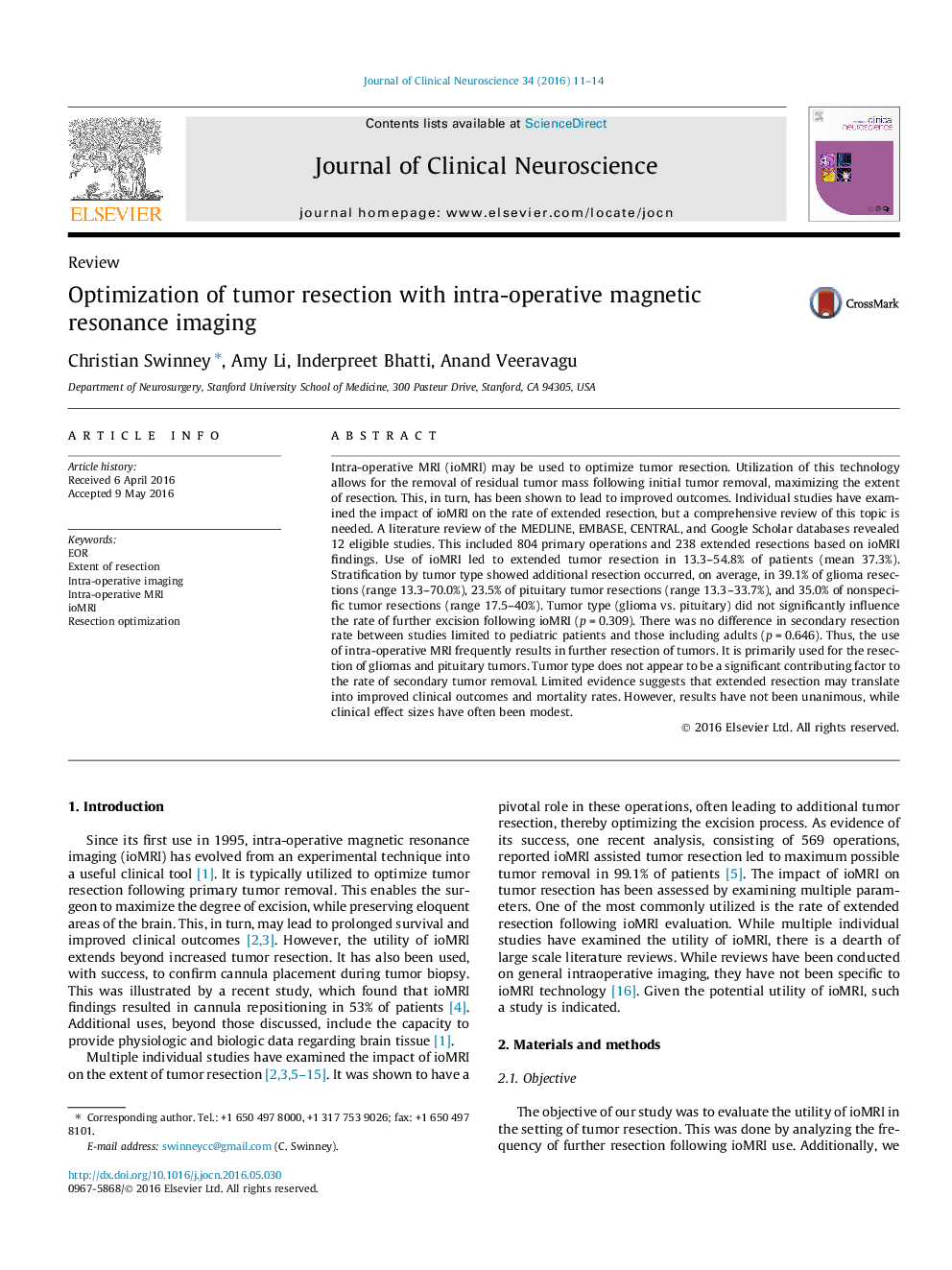| کد مقاله | کد نشریه | سال انتشار | مقاله انگلیسی | نسخه تمام متن |
|---|---|---|---|---|
| 5629845 | 1580282 | 2016 | 4 صفحه PDF | دانلود رایگان |
- The use of intra-operative MRI minimizes residual tumor mass.
- The use of intra-operative MRI may translate into improved clinical outcomes.
- The use of intra-operative MRI may translate into improved mortality rates.
- Intra-operative MRI helps resect multiple tumor types, including gliomas.
Intra-operative MRI (ioMRI) may be used to optimize tumor resection. Utilization of this technology allows for the removal of residual tumor mass following initial tumor removal, maximizing the extent of resection. This, in turn, has been shown to lead to improved outcomes. Individual studies have examined the impact of ioMRI on the rate of extended resection, but a comprehensive review of this topic is needed. A literature review of the MEDLINE, EMBASE, CENTRAL, and Google Scholar databases revealed 12 eligible studies. This included 804 primary operations and 238 extended resections based on ioMRI findings. Use of ioMRI led to extended tumor resection in 13.3-54.8% of patients (mean 37.3%). Stratification by tumor type showed additional resection occurred, on average, in 39.1% of glioma resections (range 13.3-70.0%), 23.5% of pituitary tumor resections (range 13.3-33.7%), and 35.0% of nonspecific tumor resections (range 17.5-40%). Tumor type (glioma vs. pituitary) did not significantly influence the rate of further excision following ioMRI (p = 0.309). There was no difference in secondary resection rate between studies limited to pediatric patients and those including adults (p = 0.646). Thus, the use of intra-operative MRI frequently results in further resection of tumors. It is primarily used for the resection of gliomas and pituitary tumors. Tumor type does not appear to be a significant contributing factor to the rate of secondary tumor removal. Limited evidence suggests that extended resection may translate into improved clinical outcomes and mortality rates. However, results have not been unanimous, while clinical effect sizes have often been modest.
Journal: Journal of Clinical Neuroscience - Volume 34, December 2016, Pages 11-14
